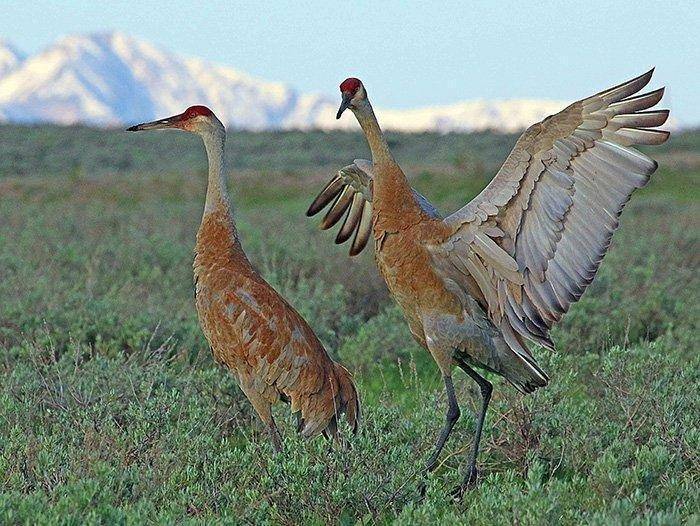DWR Press Release
DWR holds wildlife viewing event in northeastern Utah
VERNAL — If you live near a field in the Uinta Basin, you’re no stranger to the loud, rattling call of the sandhill cranes that call the area home.
On Sept. 22, you can see the birds — and learn more about them — as the Division of Wildlife Resources and its partners host a sandhill crane viewing day.
The free event runs at 7 a.m. and runs through the day. You’ll have no problem identifying the cranes: standing four feet tall, with a crimson crown and a gray body, they’re one of the largest migratory birds in the world.
See and learn about cranes
The first part of the free event runs from 7–9 a.m. at the Jensen Nature Park, 8775 E. 6000 S. in Jensen. DWR biologists will have spotting scopes and binoculars available so you can see cranes in fields near the park. They’ll also be happy to answer your questions about sandhill cranes.
“From the park,” says DWR Regional Conservation Outreach Manager Tonya Kieffer-Selby, “biologists can direct you to additional viewing areas.”
After the morning viewing event, head to the Uintah County Library, 204 E. 100 N. in Vernal, to learn about cranes and participate in fun crane-related activities. Activities, which happen at different times from 9:30 a.m. to 4 p.m., include sandhill crane yoga, sandhill crane crafts, a documentary film titled “Crane Song” and listening to Van Graham speak about the Rocky Mountain Population of greater sandhill cranes.
The next opportunity to view cranes happens at 4 p.m. That’s when an auto tour will leave the library and head to the crane’s roosting grounds at Pelican Lake and the Ouray National Wildlife Refuge. The auto tour wraps up at 6 p.m.
“Bring your own vehicle, clothes you’re comfortable wearing outside, binoculars if you have them, and drinks, water and snacks,” Kieffer-Selby says. “Also, if you want to get good, quality photos, bring a telephoto lens for your camera.”
For more information about the sandhill crane viewing day activities, call Kieffer-Selby at 435-781-9453.
Unique birds
Kieffer-Selby says sandhill cranes are unique birds. “They have voices that can be heard up to 2.5 miles away,” she says.
Sandhill cranes perform unique dancing and courtship rituals and then choose mates that perform the best. Laying usually two eggs in the spring, the parents and juveniles spend the first winter together until they separate the following spring.
Cranes use their extra long legs as defense mechanisms, often kicking violently when attacked and threatened by predators. During the winter months, the cranes flock to fields, pastures, grasslands and wetlands before returning to roost along river banks and shallow lakes at night.
Damage to agricultural fields
Cranes are opportunistic eaters, grazing on plants, grains, insects, snakes and mice. For farmers, this can be frustrating, as the cranes can damage crops by digging up tubers and agricultural seed.
“We understand the frustration local farmers have with sandhill cranes,” she says. “The crop damage the cranes cause is one of the main reasons the DWR has been working with the U.S. Fish and Wildlife Service and the Pacific Flyway Council in increase hunting permits in the Uinta Basin. In addition to viewing cranes, we hope the event will help teach the public about the importance of wildlife management.”

